One person like that
3 Comments
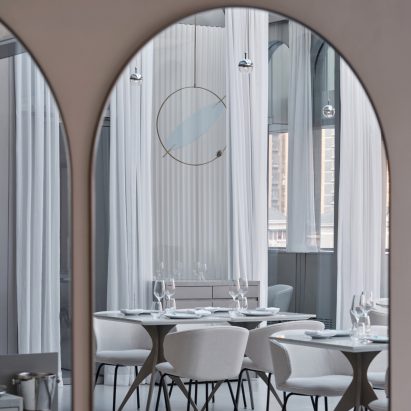
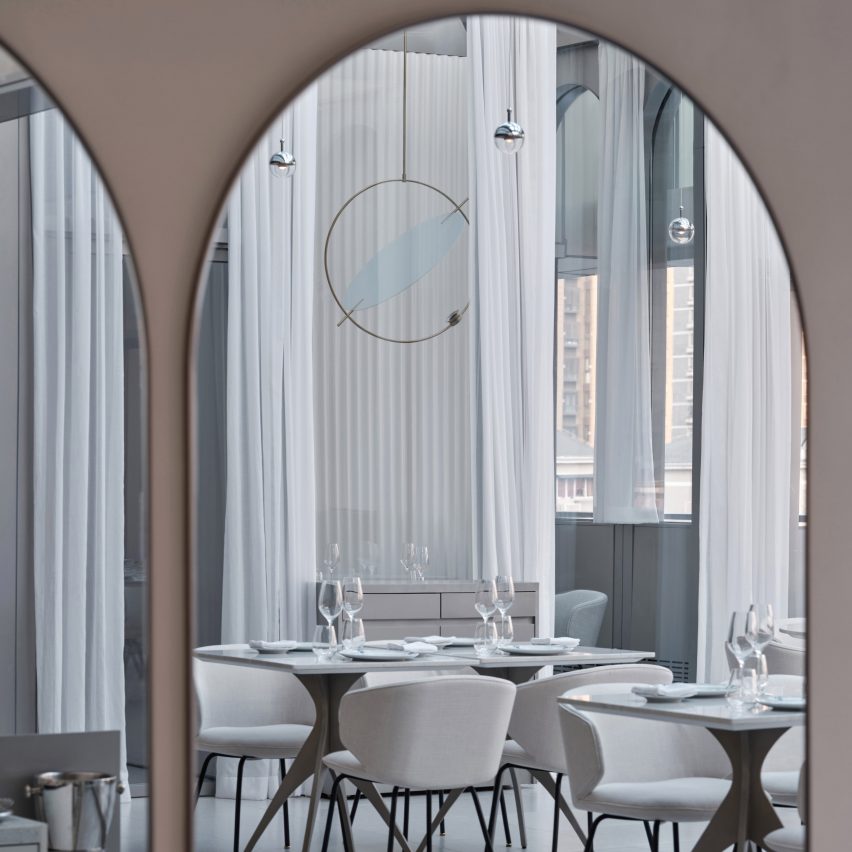
Design studio Linehouse has filled a restaurant in a Shanghai art museum with mirrors and arched details informed by eastern and western art and design.
Located inside the UCCA Edge museum, the New Wave by Da Vittorio restaurant was named after the original UCCA museum's opening exhibition The New Wave Art Movement, which also set the tone for its interiors.
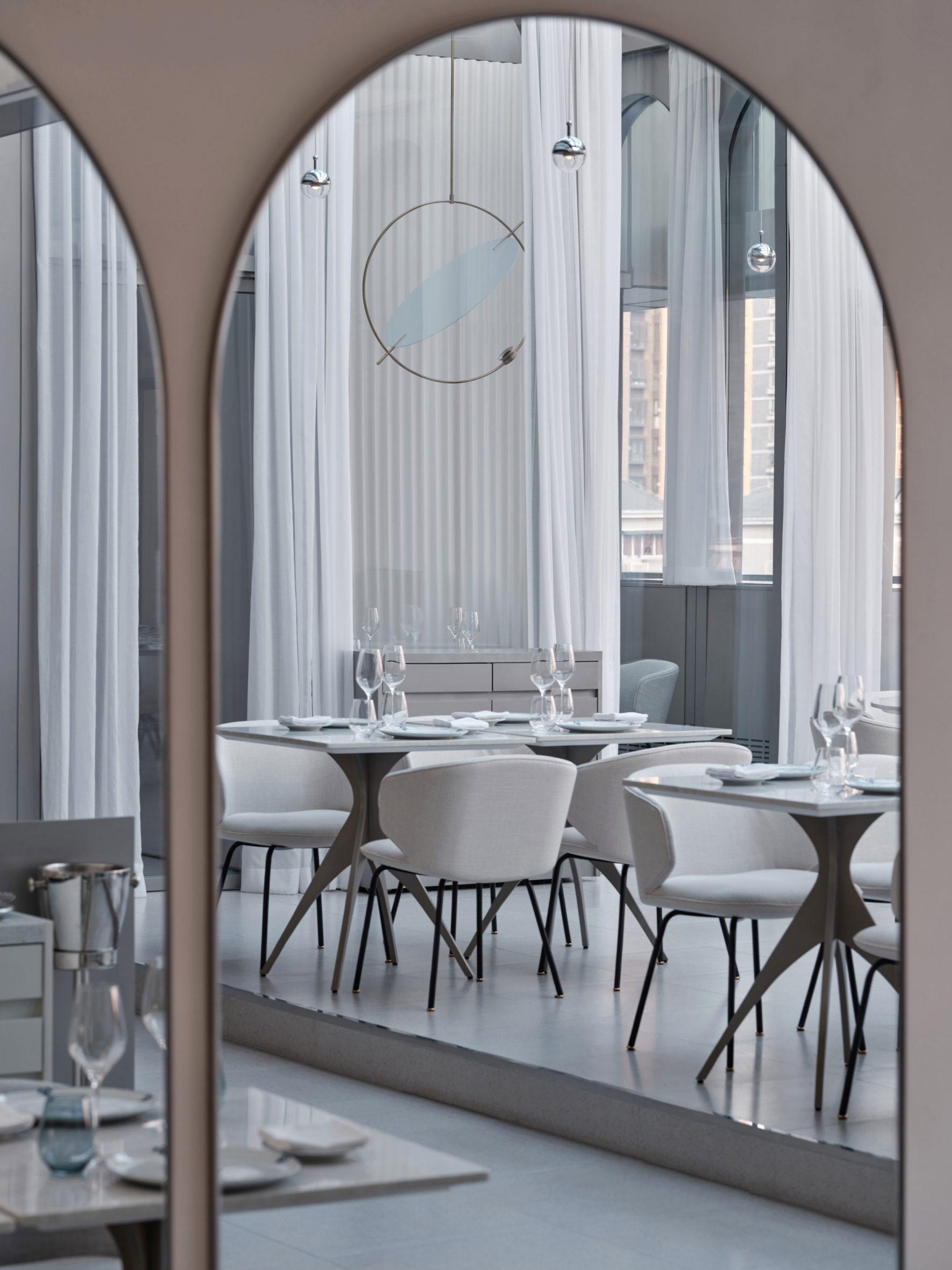 Arched shapes are used throughout the restaurant
Arched shapes are used throughout the restaurant
New Wave, a 20th-century art movement in China, is renowned for its bold experimentation that brought Chinese art into the modern art world.
“The concept for the restaurant comes from the collision of these opposing elements and the process of change,” said Shanghai-based Linehouse.
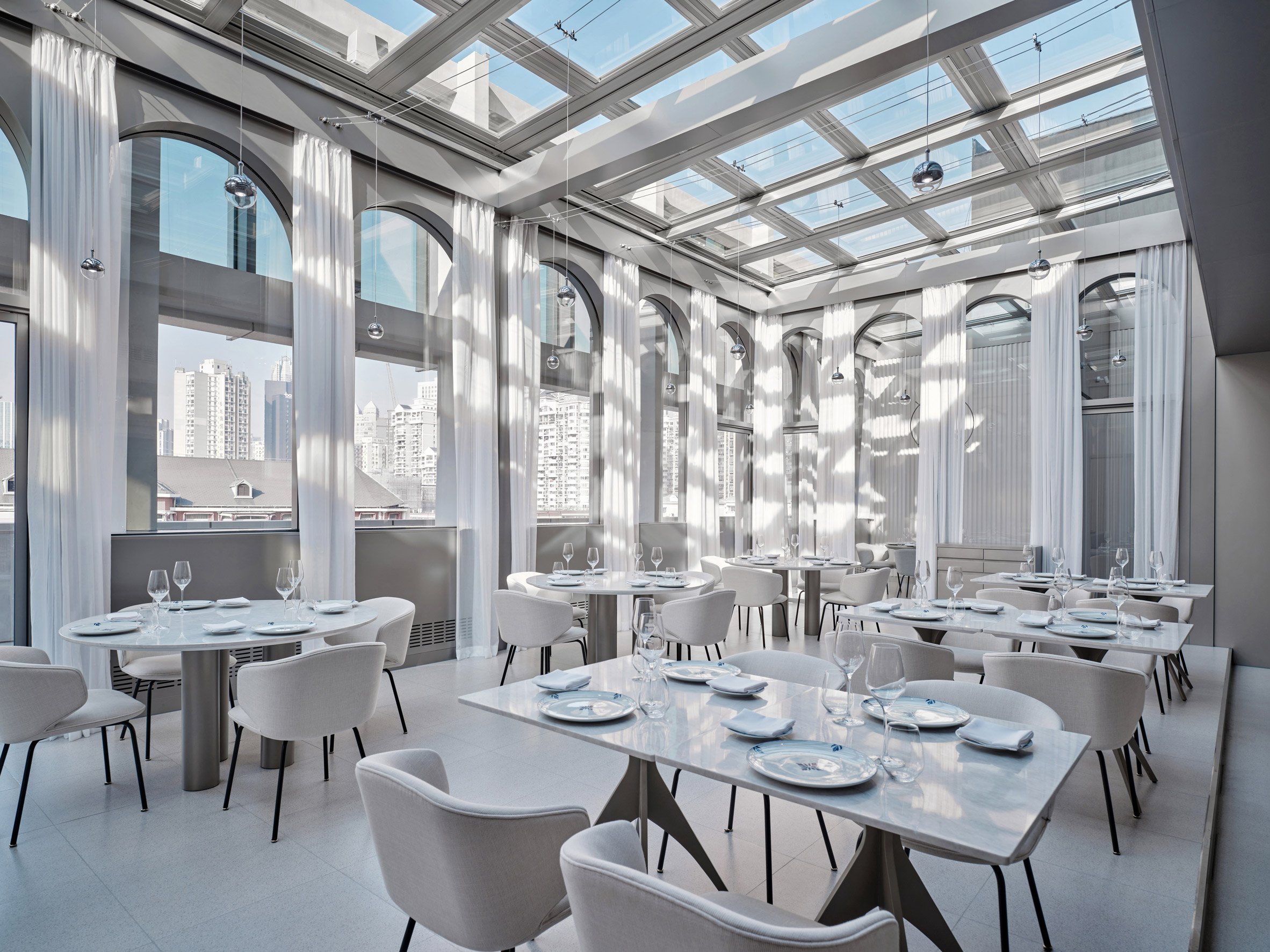 New Wave by Da Vittorio is located inside Shanghai's UCCA Edge museum
New Wave by Da Vittorio is located inside Shanghai's UCCA Edge museum
To enter the restaurant, guests pass through a narrow passage that leads from the public museum space into a more intimate dining area.
The restaurant, which measures 620 square metres, also holds a bar, private dining rooms and an outdoor terrace.
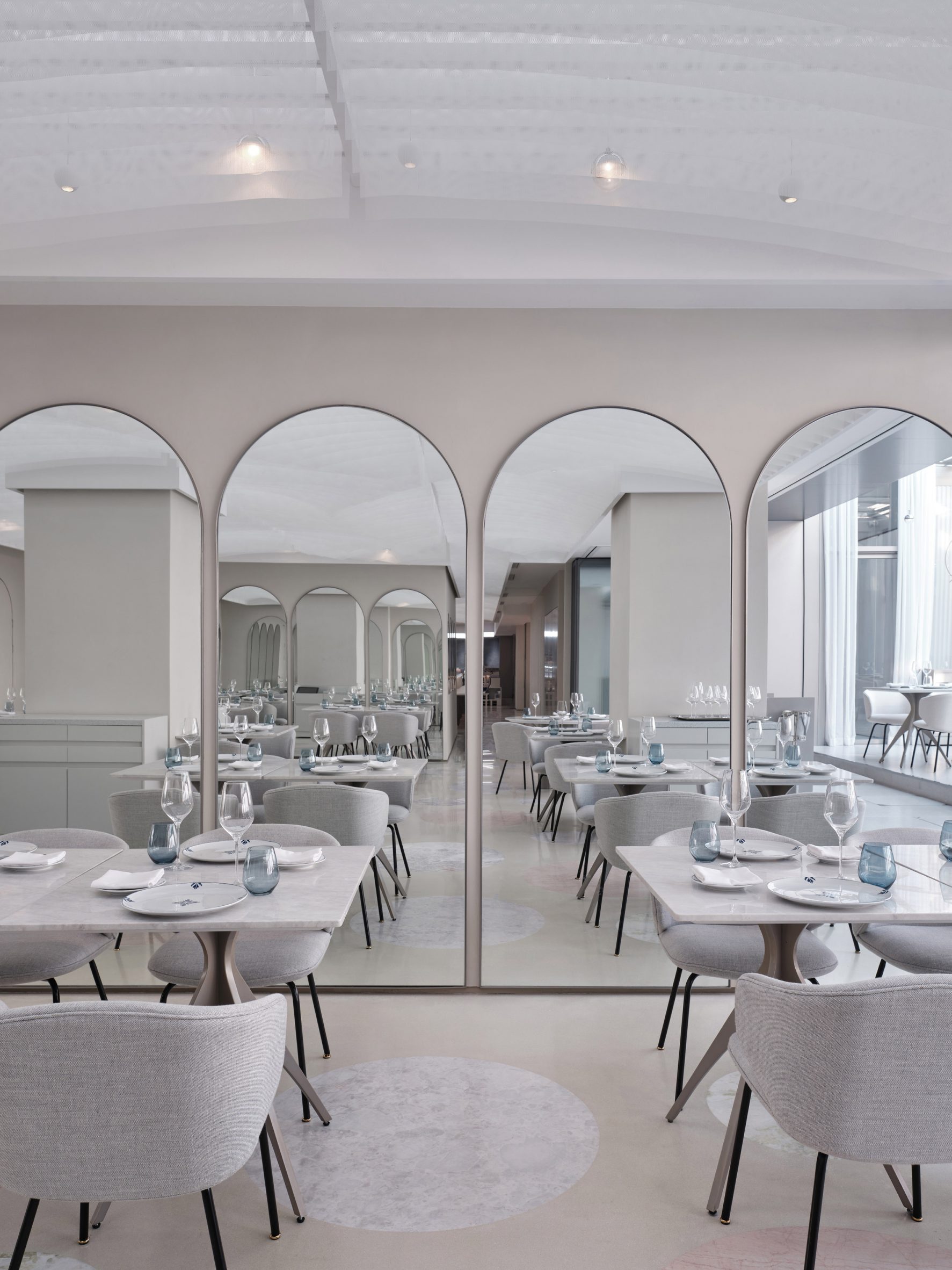 Mirrors create an illusion of more space
Mirrors create an illusion of more space
A sequence of arches was added to the restaurant in reference to the use of colonnades in classical architecture, while matching arched mirrors create an illusion of spatial progression.
New Wave by Da Vittorio also features a ceiling installation formed by arches designed in a more eastern style.
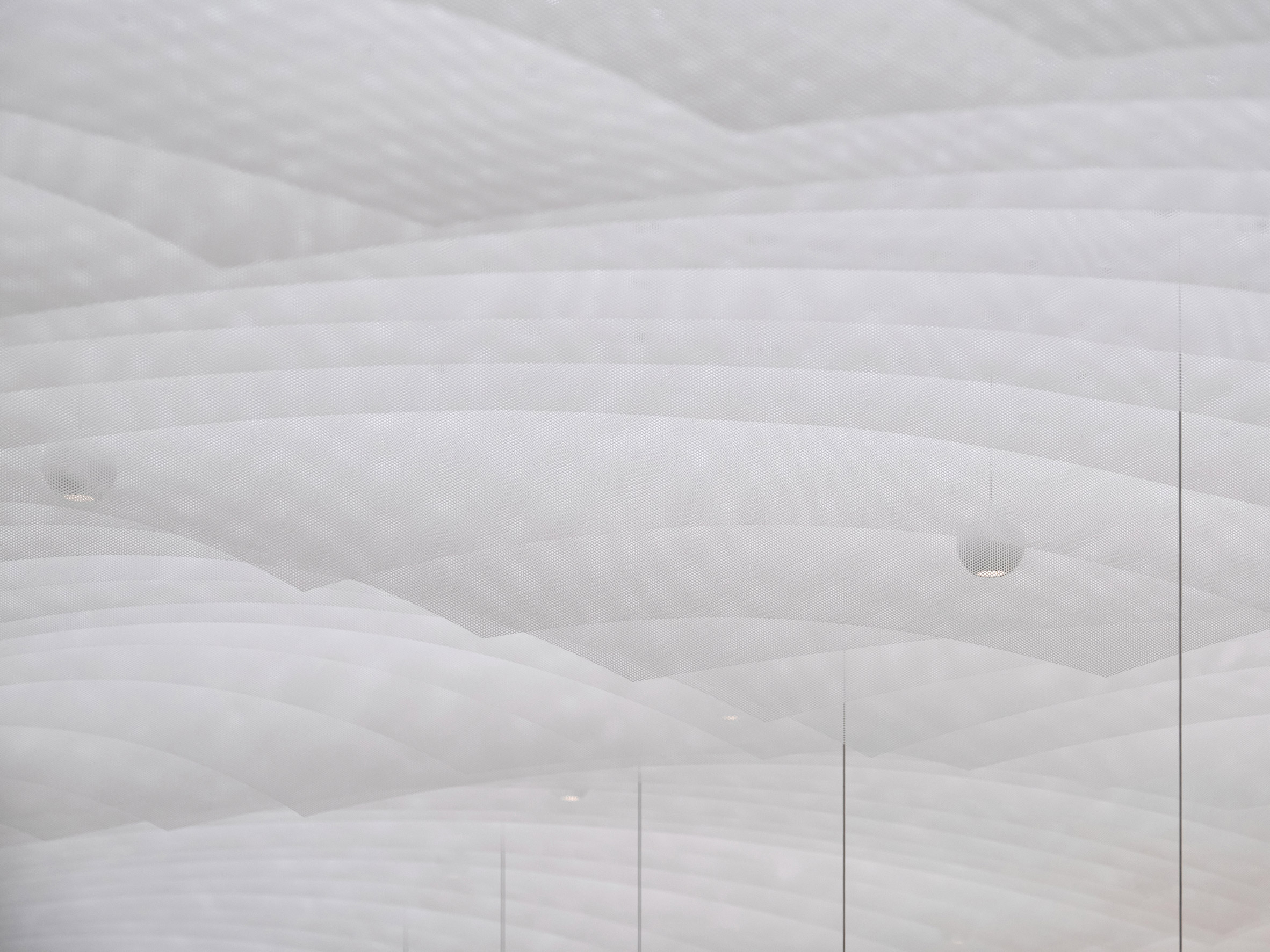 Hanging fabric was cut into curved shapes to match the arches in the interior
Hanging fabric was cut into curved shapes to match the arches in the interior
The installation consists of hanging fins made from a Japanese triaxle fabric with a woven texture, which has been cut into vaulted shapes to create a softness that evokes floating clouds.
The sheets of fabric are placed in a repetitive order with a pattern that only emerges once you see through one sheet to the next. The studio hoped this would evoke the contradiction between order and chaos.
[ 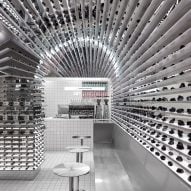
](https://www.dezeen.com/2022/01/12/black-star-pastry-shanghai-linehouse-cafe/)
“Throughout the restaurant, we seek contradiction in materiality to create qualities of soft and hard, rough to smooth, order to unordered and solid to transparent,” Linehouse co-founder and lead designer Alex Mok told Dezeen.
The studio used stone for the main bar counter, which it sculpted into a curved, fluid shape to further explore the juxtaposition between soft and hard surfaces.
Linehouse deliberately chose a stone with a smaller repetitive pattern to create a continuous piece.
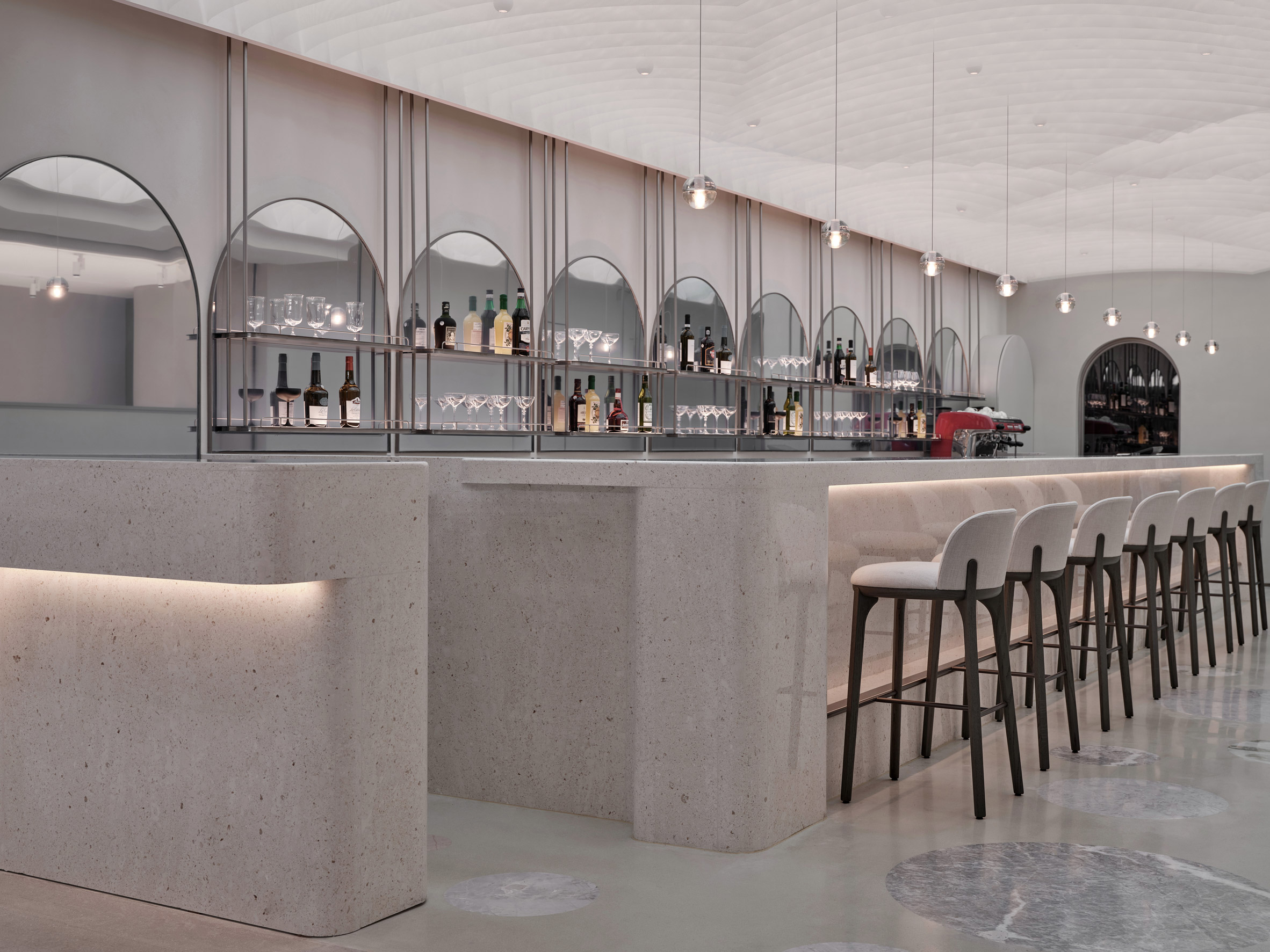 A stone bar is decorated with mirrors
A stone bar is decorated with mirrors
The bar area also has a floor patterned with different kinds of stone while in the private dining rooms, precision-machined stainless steel and curved lacquered timber were paired to create another form of contradiction.
“Materials are manipulated as a catalyst for creating disorder, dissipation, fragmentation and surprise,” Mok said.
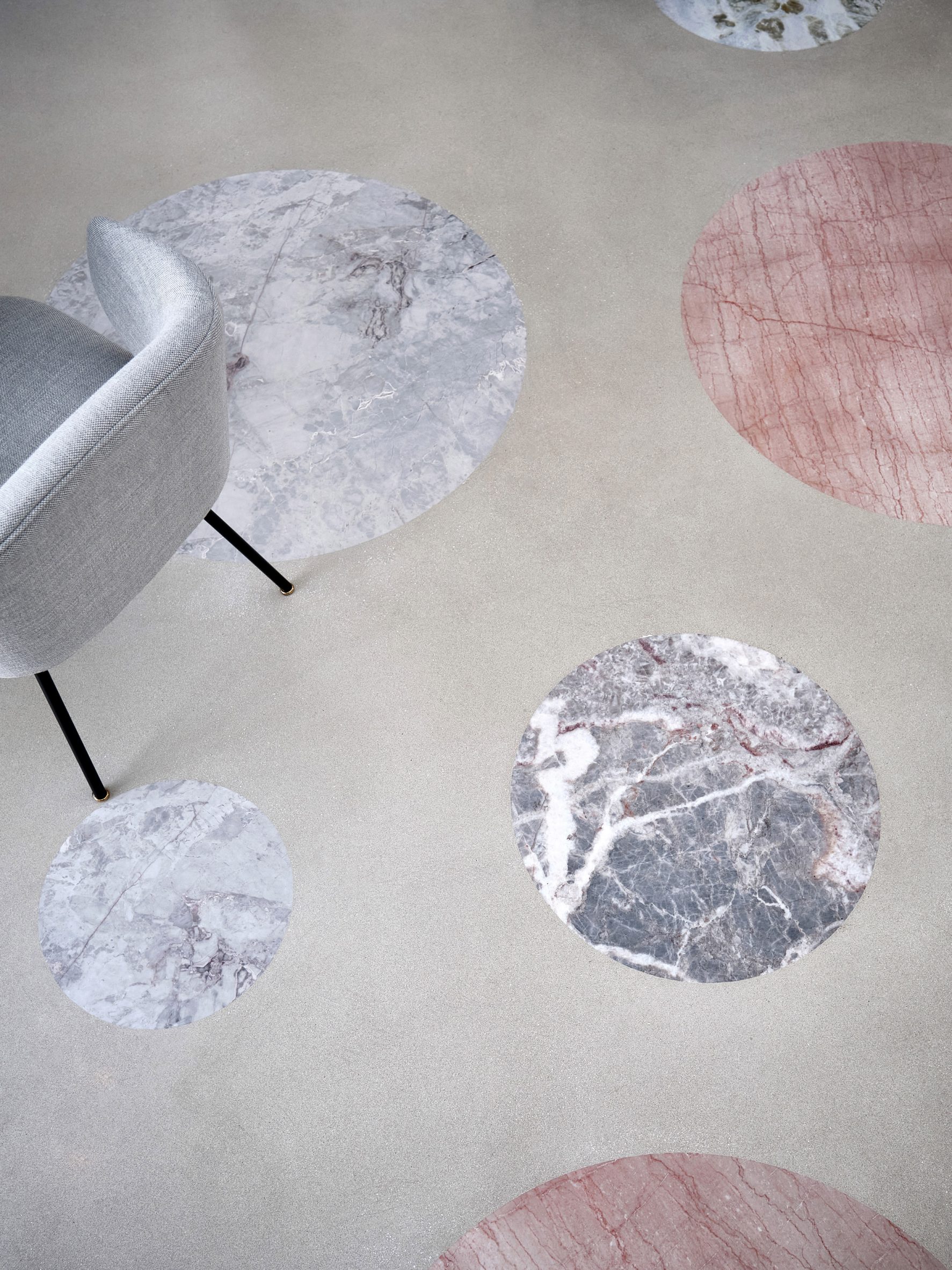 Different types of stone create a polka-dot pattern on the floor
Different types of stone create a polka-dot pattern on the floor
Linehouse also recently finished a space-theme cafe for Australian chain Black Star Pastry's first Chinese outpost.
The studio was named emerging interior designer of the year at the 2021 Dezeen Awards.
The photography is byJonathan Leijonhufvud.
Project credits:
Architect: Linehouse
Design lead: Alex Mok, Briar Hickling
Design team: Jingru Tong, Inez Low, Aiwen Shao, Leah Lin, Jiabao Guo, Cherngyu Chen
The post Linehouse designs Shanghai restaurant informed by New Wave art movement appeared first on Dezeen.
#retail #all #interiors #china #shanghai #restaurants #linehouse
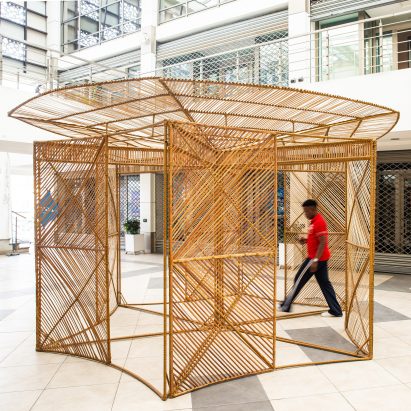
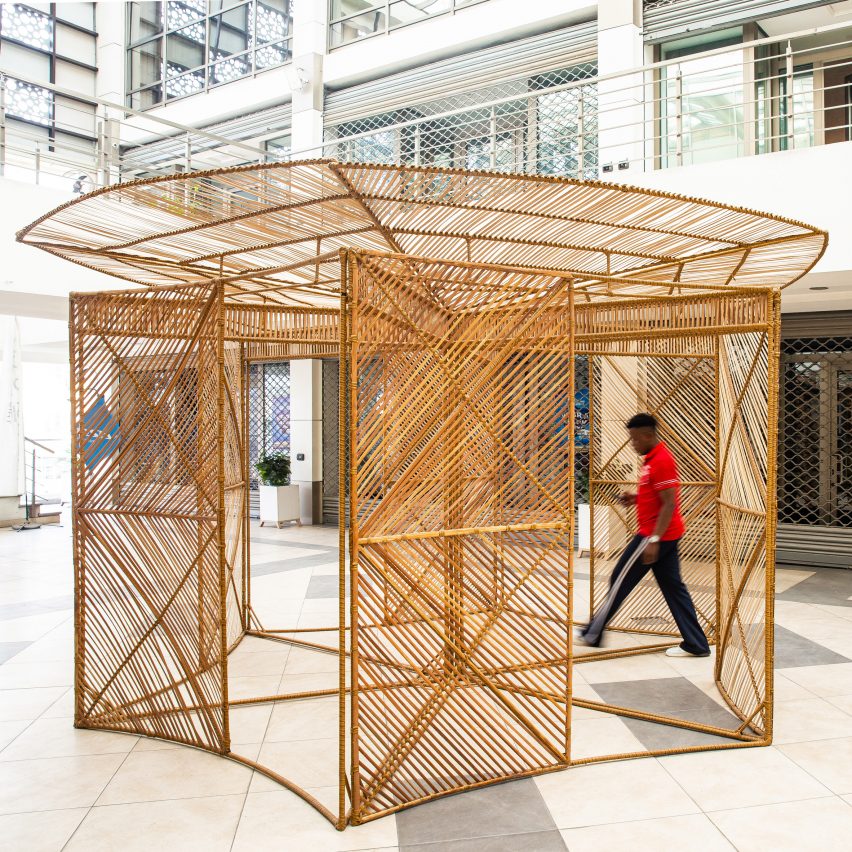
Nigerian designer Nifemi Marcus-Bello has created a modular kiosk made from bamboo for Lagos-based skateboarding company Wafflesncream.
Called Waf Kiosk, the six-piece structure is currently located at the Wafflesncream (Waf) store in the Nigerian city, where it houses the brand's collection of skateboarding apparel.
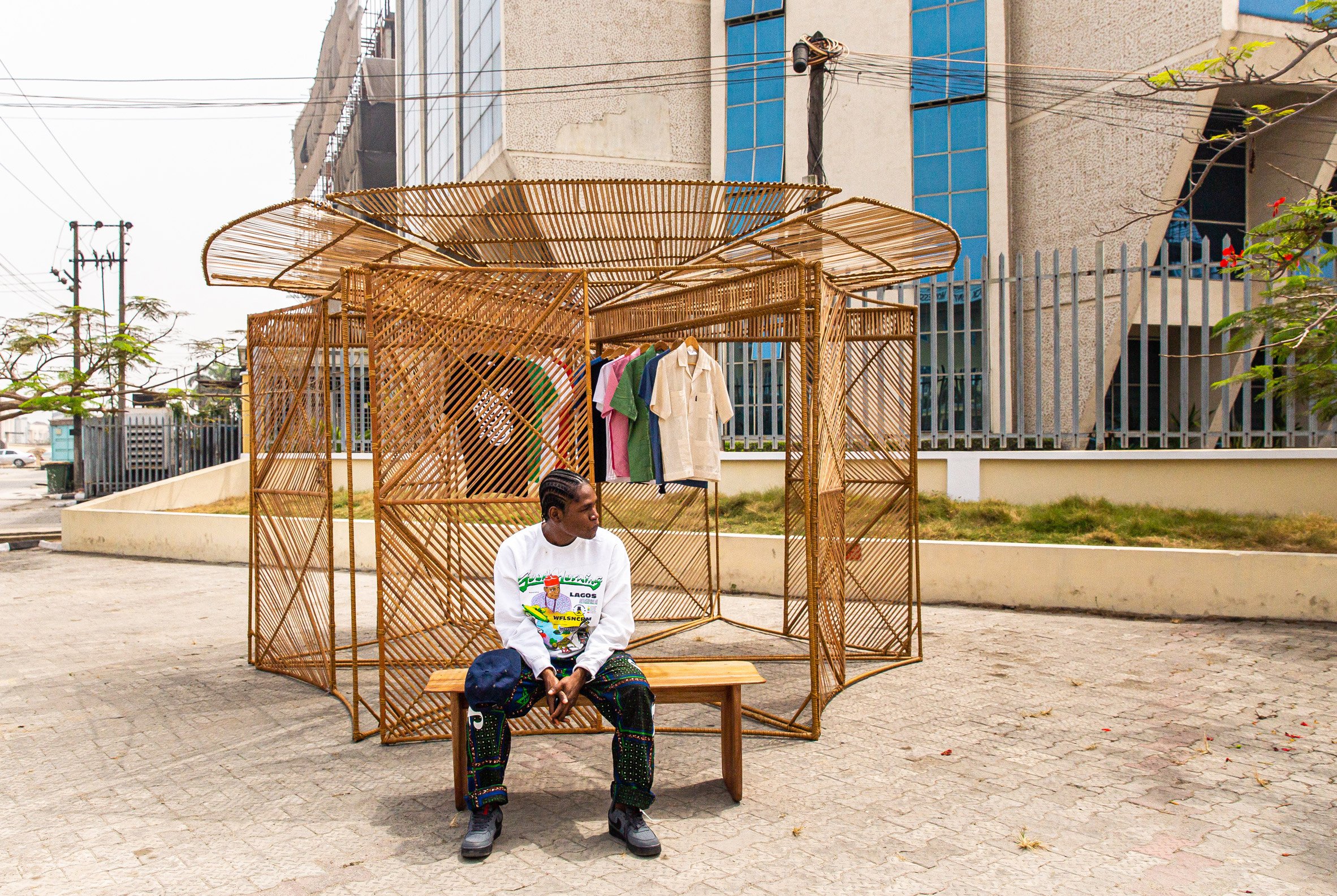 Nifemi Marcus-Bello designed Waf Kiosk for a skateboarding clothing company
Nifemi Marcus-Bello designed Waf Kiosk for a skateboarding clothing company
Marcus-Bello's design pays homage to Lagos' local streetwear sellers and the ways in which independent retailers have devised their own stores from which they sell.
"Leaning toward the evolution of the brand and its use of natural materials and tones, the idea was to design a space that would embrace a singular and humble material, in this case, bamboo," Marcus-Bello told Dezeen.
"While the kiosk is in use, clothes are hung above eye level to pay homage to 'Okrika' – Lagos' streetwear vendors who have created an architectural archetype to the selling of bootleg and secondhand clothing across Lagos," he added.
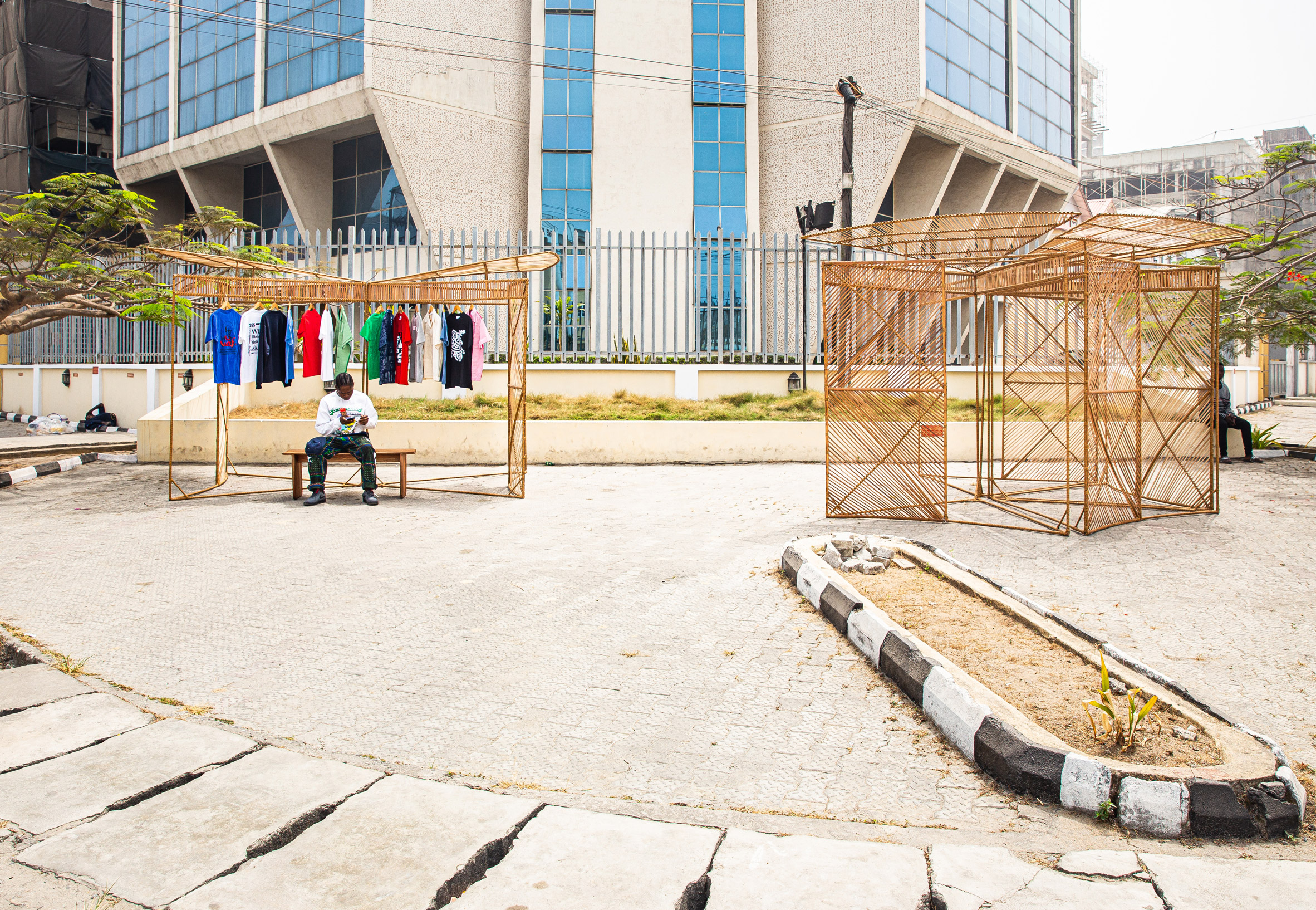 The modular pavilion can be arranged in different configurations
The modular pavilion can be arranged in different configurations
Waf Kiosk is built from tubular steel and bamboo – a sustainable plant that is known for its natural lightness and flexibility as well as its strength. The tubular steel was used to construct the frame of each modular structure, while the bamboo was used to wrap around the final design.
Marcus-Bello sourced the bamboo from Badagry, a coastal town that straddles the outskirts of Lagos and the northern bank of the creek stretching to Porto-Novo, in neighbouring Benin.
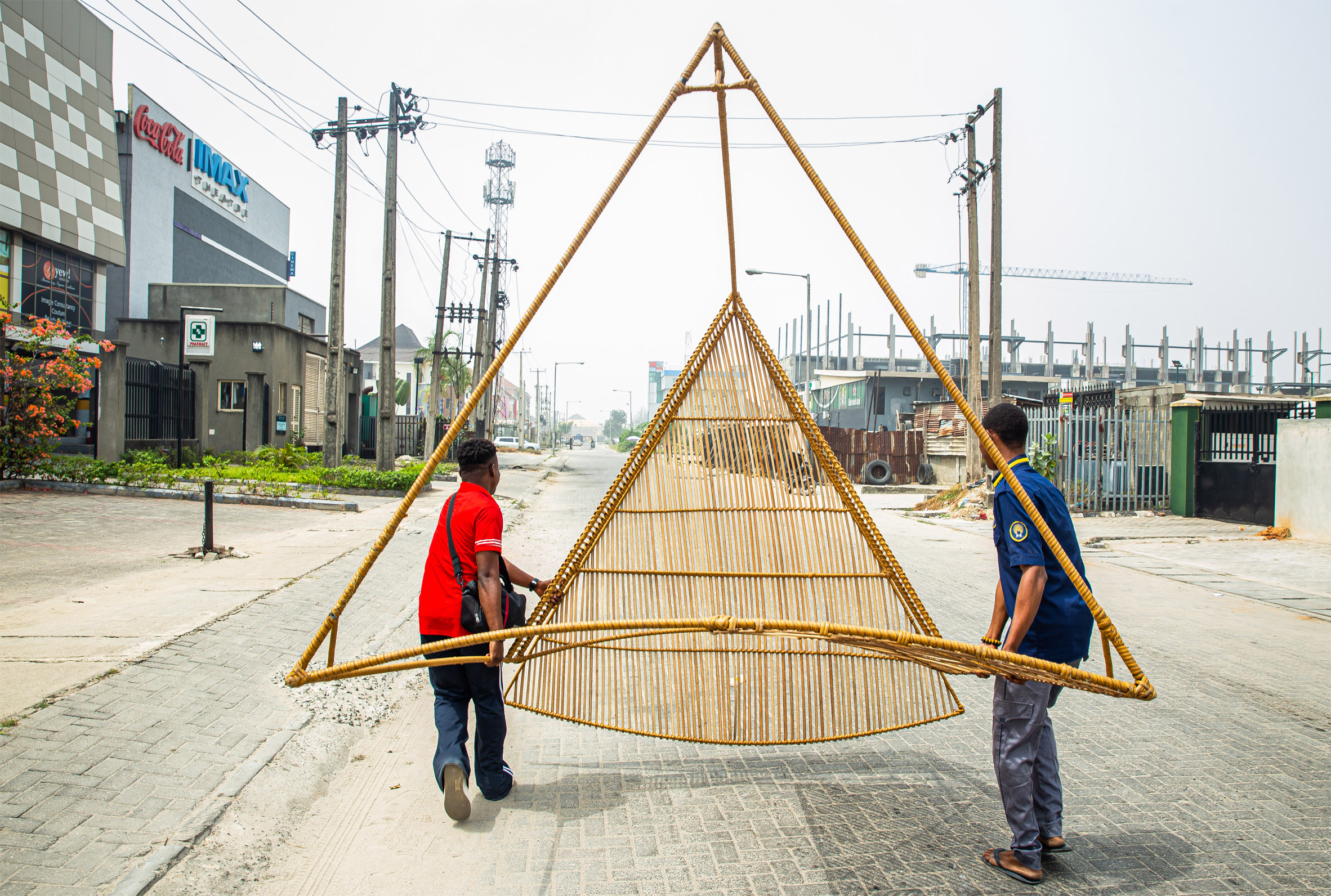 Marcus-Bello used bamboo for its lightweight qualities
Marcus-Bello used bamboo for its lightweight qualities
The designer became interested in the material following a research trip to the Beninese captial where he saw that many shop and home frontages featured bamboo blinds called kosinlé.
He was particularly attracted to the "beautiful silhouette effects" the blinds had on the people behind them.
[ 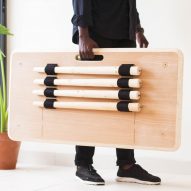
](https://www.dezeen.com/2016/10/26/nifemi-marcus-bello-tebur-flat-pack-table-desk-furniture-design/)
"During a research trip to the Benin Republic, I was driving from the capital city Porto-Novo to Cotonou," Marcus-Bello explained.
"As we drove to the main road leading to Cotonou I noticed these locally made blinds used to cover the front of wooden kiosks that sold confectioneries and windows of the homeowners as well."
"I tracked down a local maker and bought two of the blinds and brought them to Lagos with me" he continued.
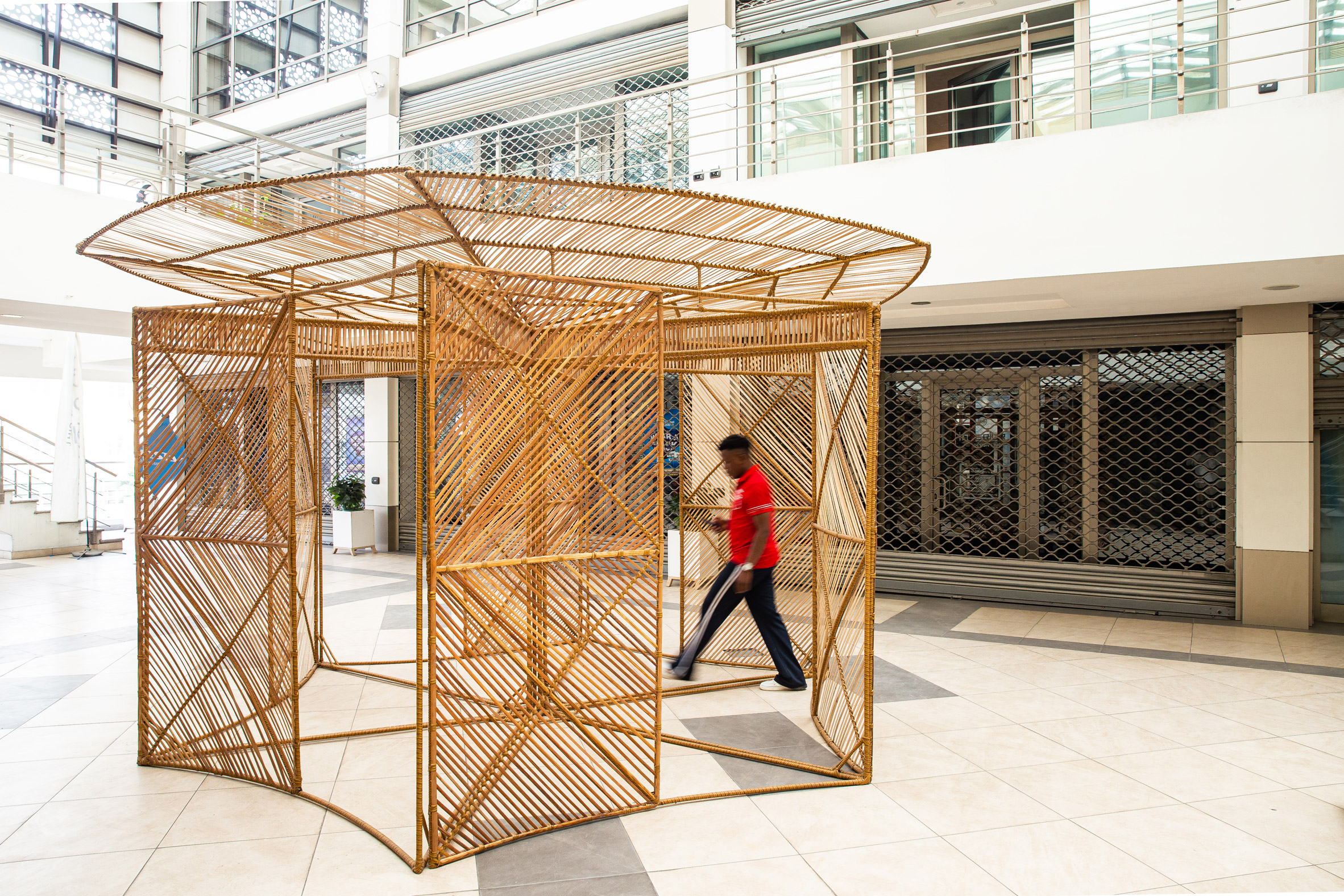 The kiosk can be carried to different locations in Lagos
The kiosk can be carried to different locations in Lagos
The use of bamboo strips also means that the structure can easily be transported to different locations.
The six triangular structures can also be assembled into multiple variations, creating what Marcus-Bello calls "a variety of experiences" for shoppers.
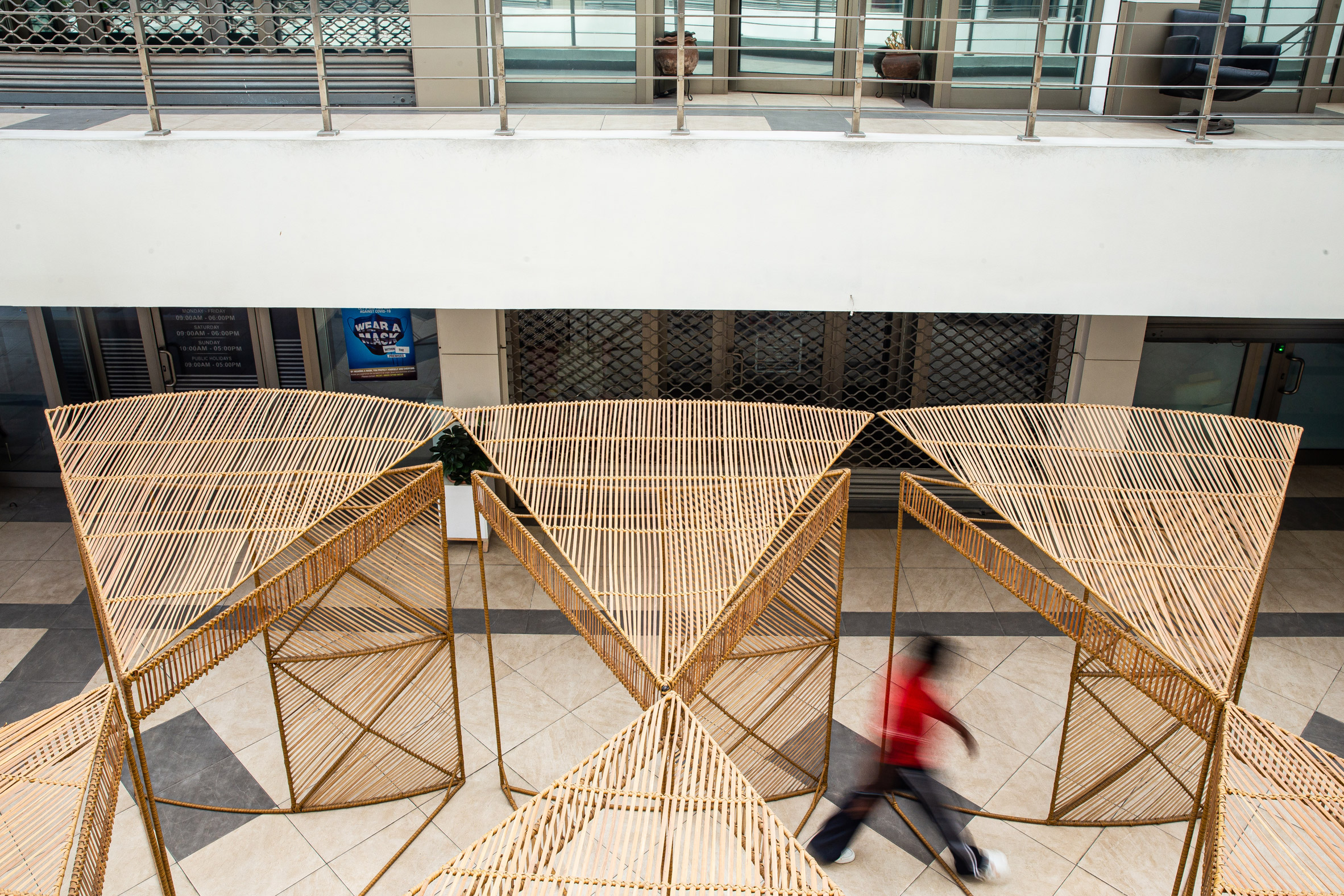 Marcus-Bellow drew on Beninese blinds for the kiosk
Marcus-Bellow drew on Beninese blinds for the kiosk
"One thing that stood out to me in our conversation was the necessity for modularity for both form and functionality," the designer said.
"Using one, two or three pieces you can create different setups, which allows the brand to have two or three activations across the city during busy seasons."
"The final design is able to create a variety of setups allowing modularity in not just its form but its experience," he added.
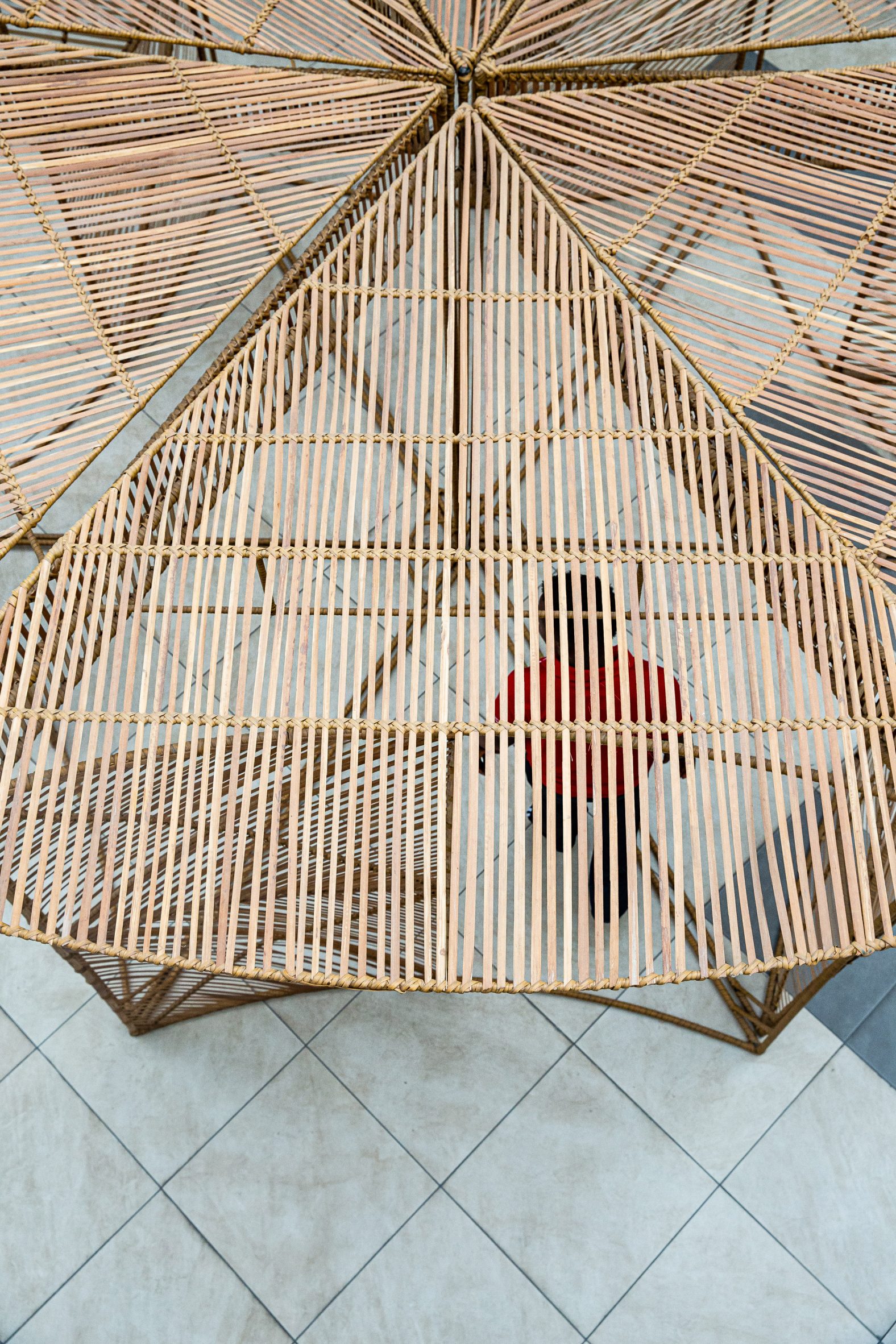 The slatted bamboo is designed to create interesting silhouettes
The slatted bamboo is designed to create interesting silhouettes
Due to the bamboo's versatility, the material has been used to create pavilions all over the world.
Architecture studio Kengo Kuma and Associates built a pavilion with a textile roof supported by bamboo stalks at a temple in Kyoto, Japan, while artist Morag Myerscough installed a colourful bamboo structure in a park in London.
The photography is byJide Ayeni.
The post Nifemi Marcus-Bello creates bamboo pavilion for Nigerian skateboarding brand appeared first on Dezeen.
#all #design #highlights #installations #retail #bamboo #pavilions #kiosks #nigeria #lagos #popupshops #shops #nifemimarcusbello
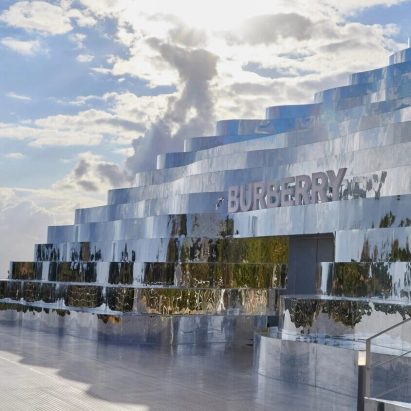
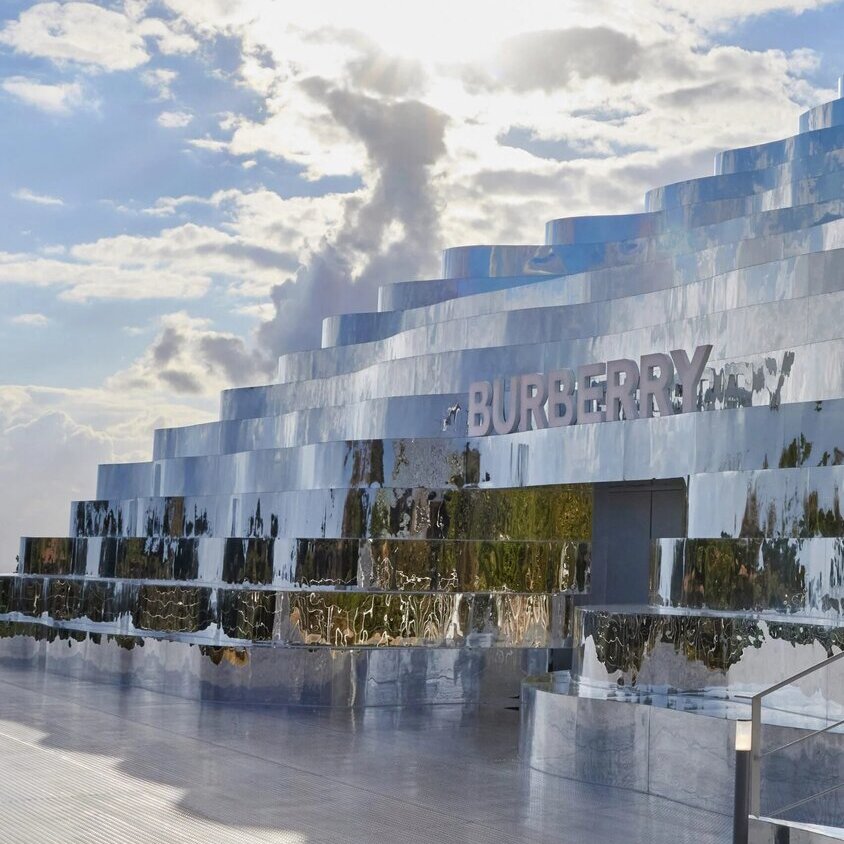
In this week's comments update, readers are irritated by Burberry's design for a reflective pop-up store in South Korea and discussing other top stories.
British fashion brand Burberry has installed a pop-up store that reflects a surrounding mountain range on Jeju Island, South Korea, for its latest outerwear clothing collection.
The Imagined Landscapes Jeju installation is made from plywood, timber and a reflective polycarbonate mirror material.
"Out of touch in pretty much every way possible"
Commenters are annoyed. "Oh, the poor birds!" said Stefanos S. "Why are architects allowed to design reflective buildings? The design is great but the reflecting material is plain wrong."
Apsco Radiales agreed: "I can even get over the shape, the design, the location, but why in God's name are you building such a highly reflective building that will destroy thousands of birds?"
"Tomorrow's trash today!" continued Alexis Harrison. "Hopefully, South Korea has plenty of landfill space for all that non-circular polycarbonate and plywood once this gets discarded after a pitifully short life pleasuring a select few."
"Out of touch in pretty much every way possible," concluded Steve Leo.
Dezeen has asked Burberry if the building poses a risk for birds but hasn't yet had a response.
Are readers being harsh? Join the discussion ›
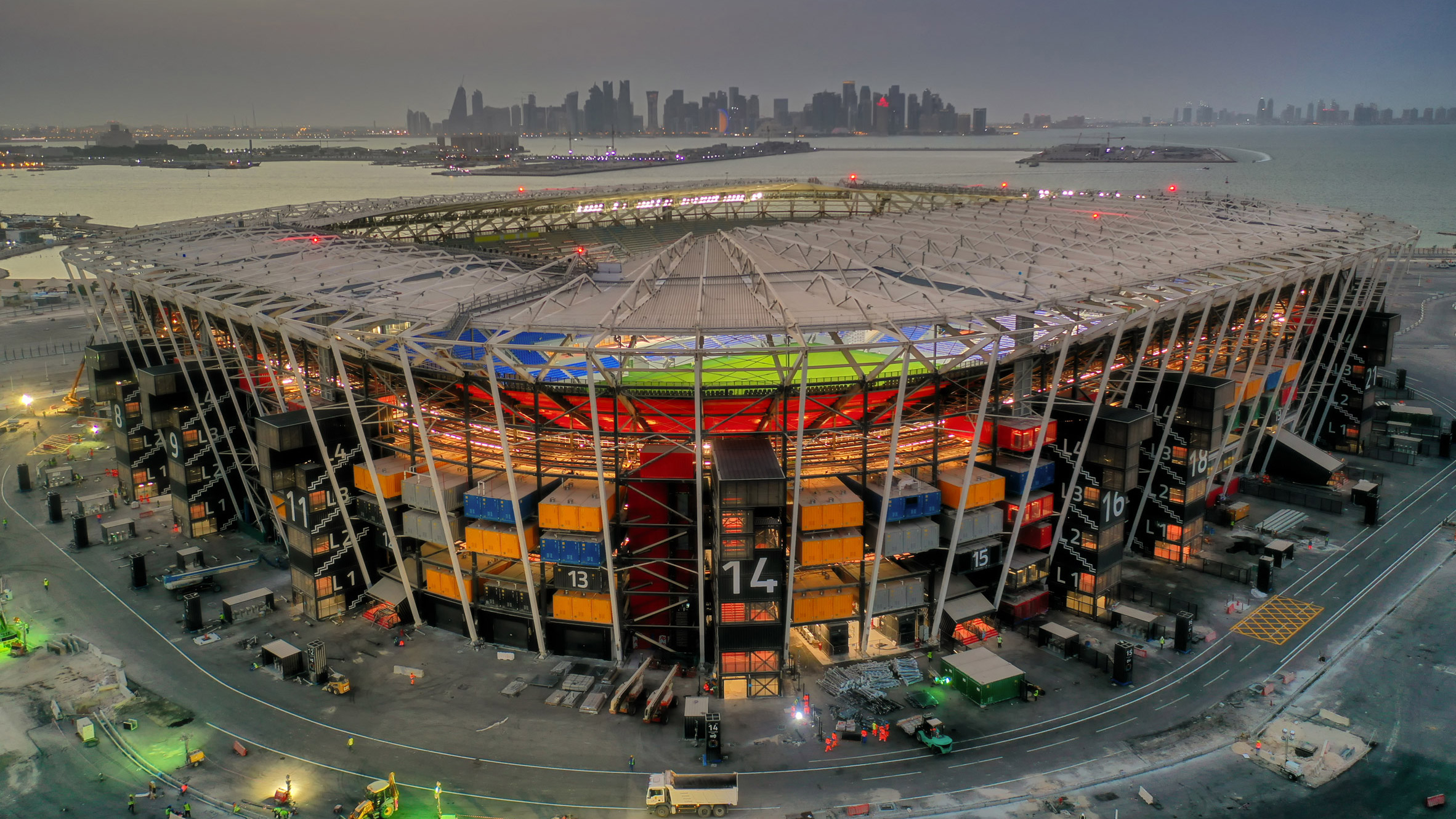 Demountable stadium built with shipping containers reaches completion in Qatar
Demountable stadium built with shipping containers reaches completion in Qatar
Commenter says "if buildings could virtue-signal," shipping container stadium "would be a role model"
Readers are debating a demountable stadium built with shipping containers, which is nearing completion in Qatar ahead of the FIFA 2022 World Cup.
"If this building actually gets disassembled and built somewhere else, it will be the architecture story of the decade," said Puzzello.
"From what I can see the stadium is not 'built with shipping containers,'" replied Walter Astor. "The stadium is built with steel and concrete and then some repurposed shipping containers were tacked on to allow a feeble claim to sustainability. If buildings could virtue-signal, this would be a role model."
Garlic agreed: "In what way is this sustainable? A few tokenistic shipping containers plonked on for aesthetics doesn't make it sustainable. And what happens to those after the World Cup?"
Is Stadium 974 a clever idea? Join the discussion ›
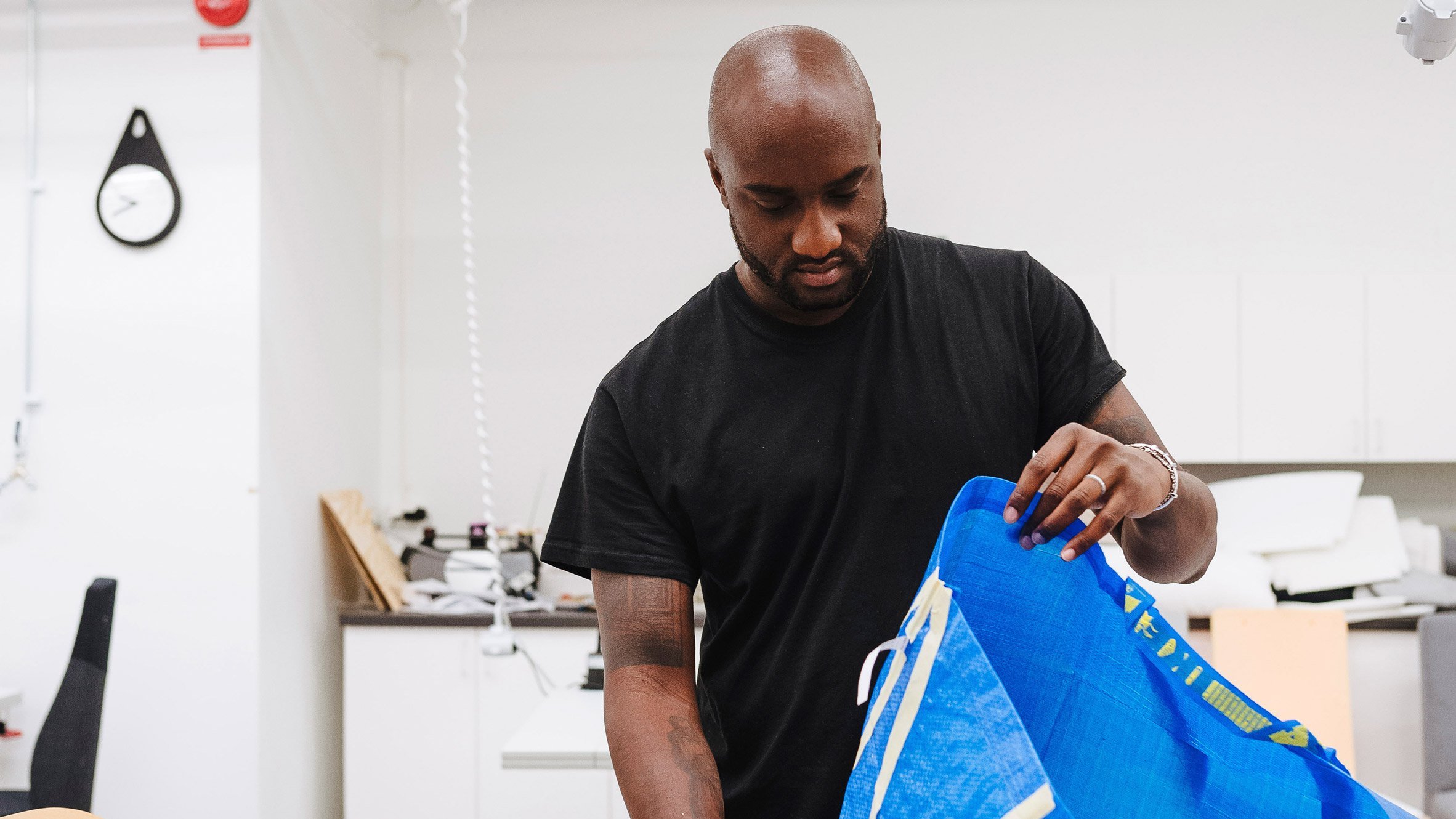 Ten projects by Virgil Abloh that demonstrate his versatility as a designer
Ten projects by Virgil Abloh that demonstrate his versatility as a designer
Readers believe Virgil Abloh "showed the world everything is possible"
Commenters, designers and creatives have paid their respects to Virgil Abloh following his death from cancer this week. We also rounded up 10 projects that illustrate the designer's boundary-pushing approach.
"Sad day," said Nir. "Rest in peace icon!"
"The legacy you left behind will always be remembered," added Lek. "You've shown the world everything is possible."
Haokip concluded: "Never a fan of his work, but sad that he passed away so young. God bless his family."
What was your most memorable project by Abloh? Join the discussion ›
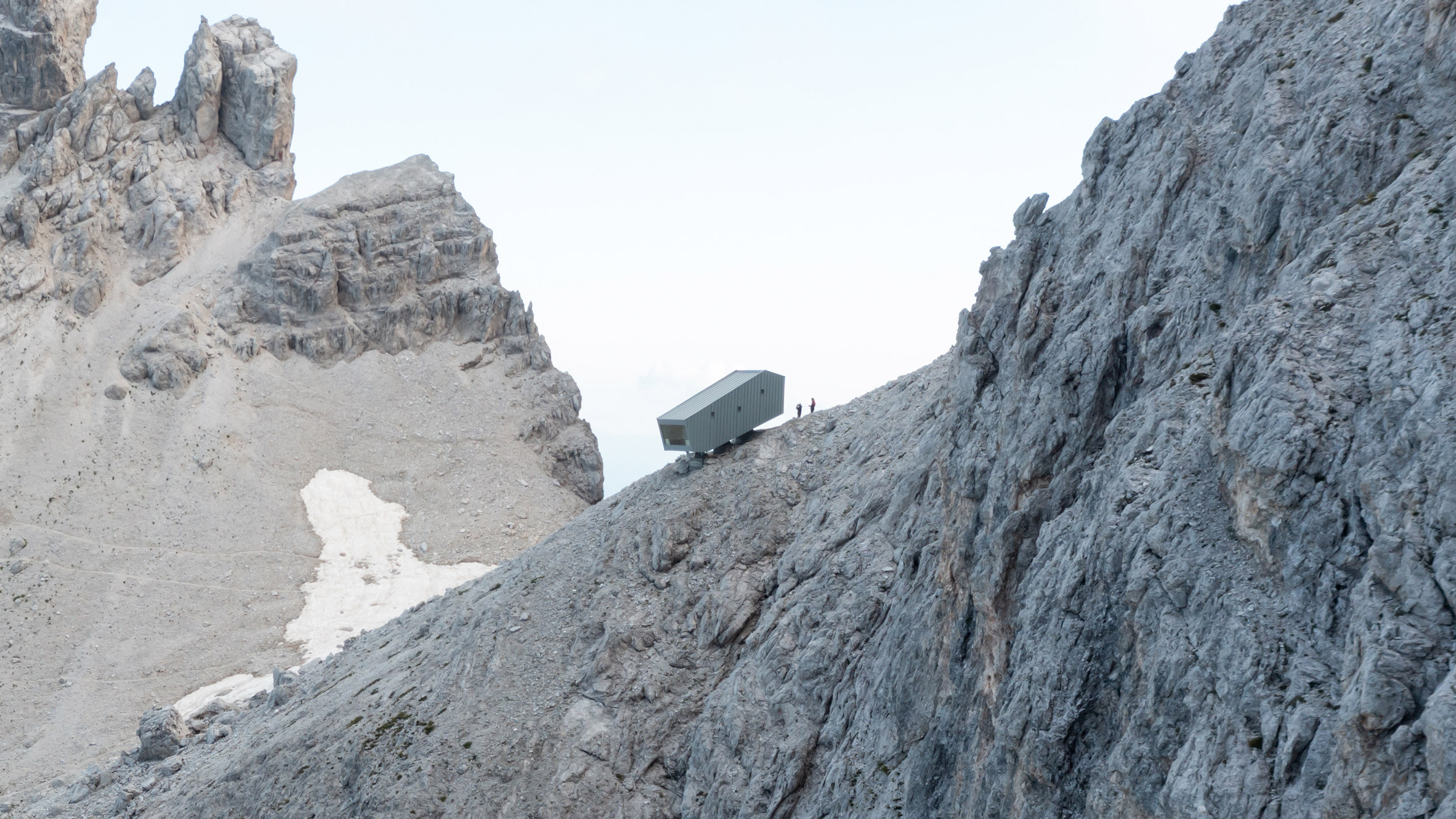 Zinc-clad hikers' cabin perches on a cliff edge in the Dolomites
Zinc-clad hikers' cabin perches on a cliff edge in the Dolomites
Commenter calls hikers' cabin "superb in all aspects"
Readers are discussing a small cabin that Demogo has perched on the dramatic Marmarole mountain range in Northern Italy's Dolomites. It is meant as a refuge for hikers.
"This project is superb in all aspects," said Sheets. "Beautifully scaled, shaped, and sited – conscientiously and responsibly designed, expertly executed."
"Mixed feelings about this being an emergency shelter," continued JZ. "The last thing one probably requires is being perched in a wind-rattled box that appears to be intent on funneling off the edge of the mountain."
DY disagreed: "I do a tonne of multi-day mountaineering and in my opinion, this is fit for purpose. Beautifully designed and well located for visibility purposes. If you're worried about 'funneling off the edge' after a five-hour hike in steep terrain, then you shouldn't be up that high in the first place."
What do you think of the cabin? Join the discussion ›
Read more Dezeen comments
Dezeen is the world's most commented architecture and design magazine, receiving thousands of comments each month from readers. Keep up to date on the latest discussions on our comments page.
The post Commenter questions why Burberry designed "a building that could destroy thousands of birds" appeared first on Dezeen.
#all #architecture #comments #retail #installations #southkorea #popupshops #commentsupdate #burberry

Imagine if you could walk into your local Walmart and your favorite products were delivered to you before you even had to ask. Imagine the possibilities if every camera in your town was connected, and had facial recognition software that could identify you, and call up your preferences on screen before you even asked for it. Facial recognition use cases in retail are endless. Facial Recognition Use Cases in Retail
#biometrics #personalization #selfservice #retail #technology #iris #eyetracking #retailing #facialrecognition #facerecognition #facedetection #computervision
Shoprite has showcased its latest retail innovation – an automated, cashless “no queues, no checkout, no waiting” concept store called Checkers Rush.
The store is located at the offices of Shoprite’s new digital business unit ShopriteX, which was officially launched on Wednesday.
“We use advanced AI and machine vision technology and cameras to identify which products and brands customers are taking from the shelf, and then we automatically bill your bank card.”
See Checkers Rush – Take what you want and walk out
#technology #southafrica #checkers #retail
The Checkers Rush concept store allows customers to grab the products they want and leave without having to pay at a checkout point.
https://gadgeteer.co.za/checkers-rush-take-what-you-want-and-walk-out-without-queues-or-cashiers

'Founded in #Chicago in 1905, the #IWW is open to #all #workers. Don’t let the “ #industrial” part fool you; members include #teachers, #social workers, #retail workers, #construction workers, #bartenders and #computer #programmers. Only #bosses are not allowed to join.'
#world #labor #union #solidarity #organize
Bed Bath & Beyond, once a leader in kitchenware and bedding, is in free fall. It is racing to win back customers and salvage its brand before the pressures of modern retailing cave in.
"There needs to be a fundamental change in our approach," [interim CEO Mary Winston] said. Bed Bath & Beyond's (BBBY) stock has lost around 90% of its value over the past five years and is on the verge of slipping below $10 a share. On Thursday, shares fell to a 20-year low.